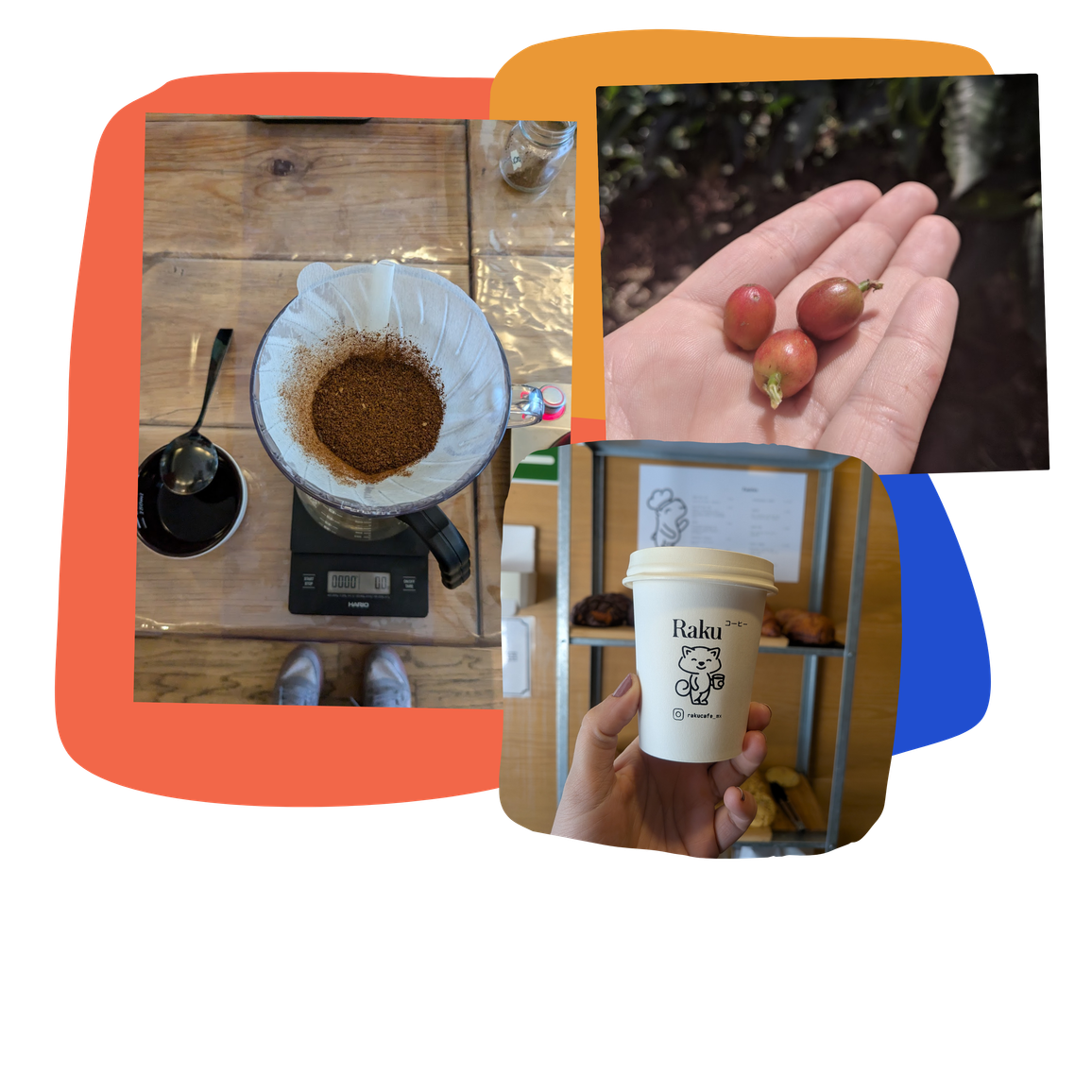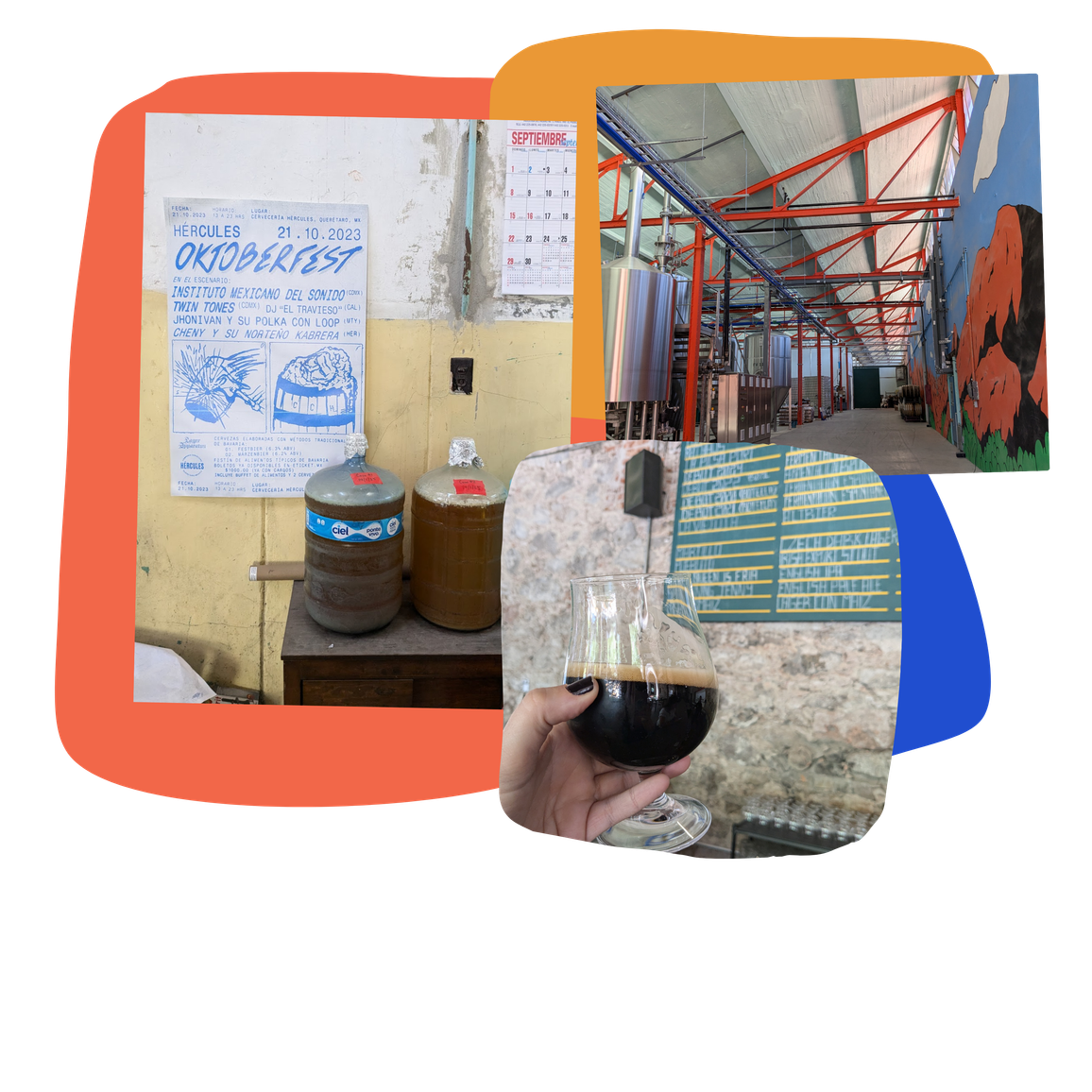Mexican Gin
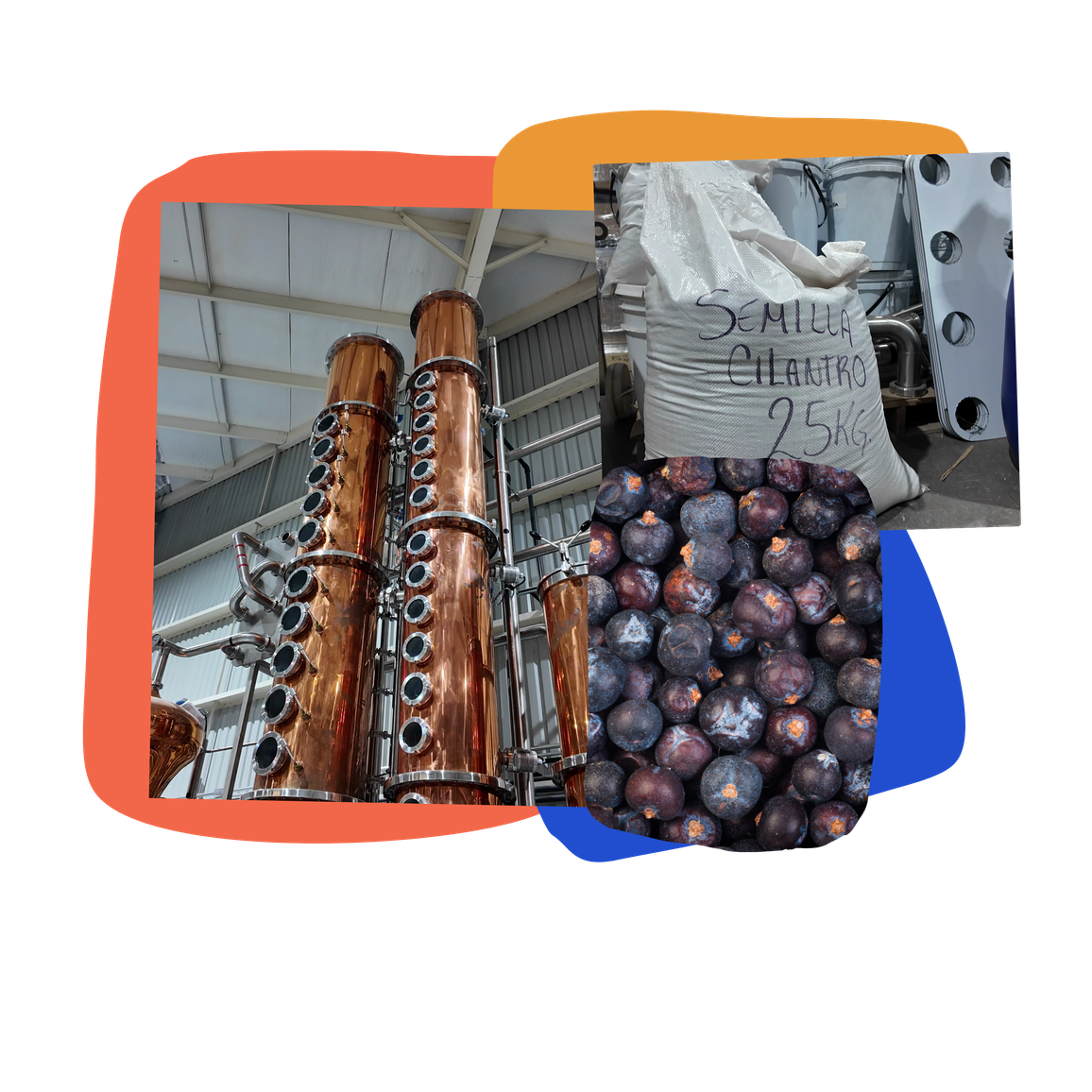
Mexican Gin
Gin is a classic spirit defined by its botanicals. So, what happens when you make it in one of the world’s most biodiverse countries? 👀
Listen to this episode to hear about:
- The fascinating history of gin, from its Dutch roots to its global resurgence during the craft cocktail boom
- How two local producers are blending tradition with innovation to define a new category of Mexican gin
- What makes our gin stand out compared to brands from more established markets like the UK and Spain
- And where to find your own bottles!
Subscribe
Subscribe to the show in your favorite podcast player to make sure you never miss an episode!
And maybe leave a rating and review while you're there? 🙏
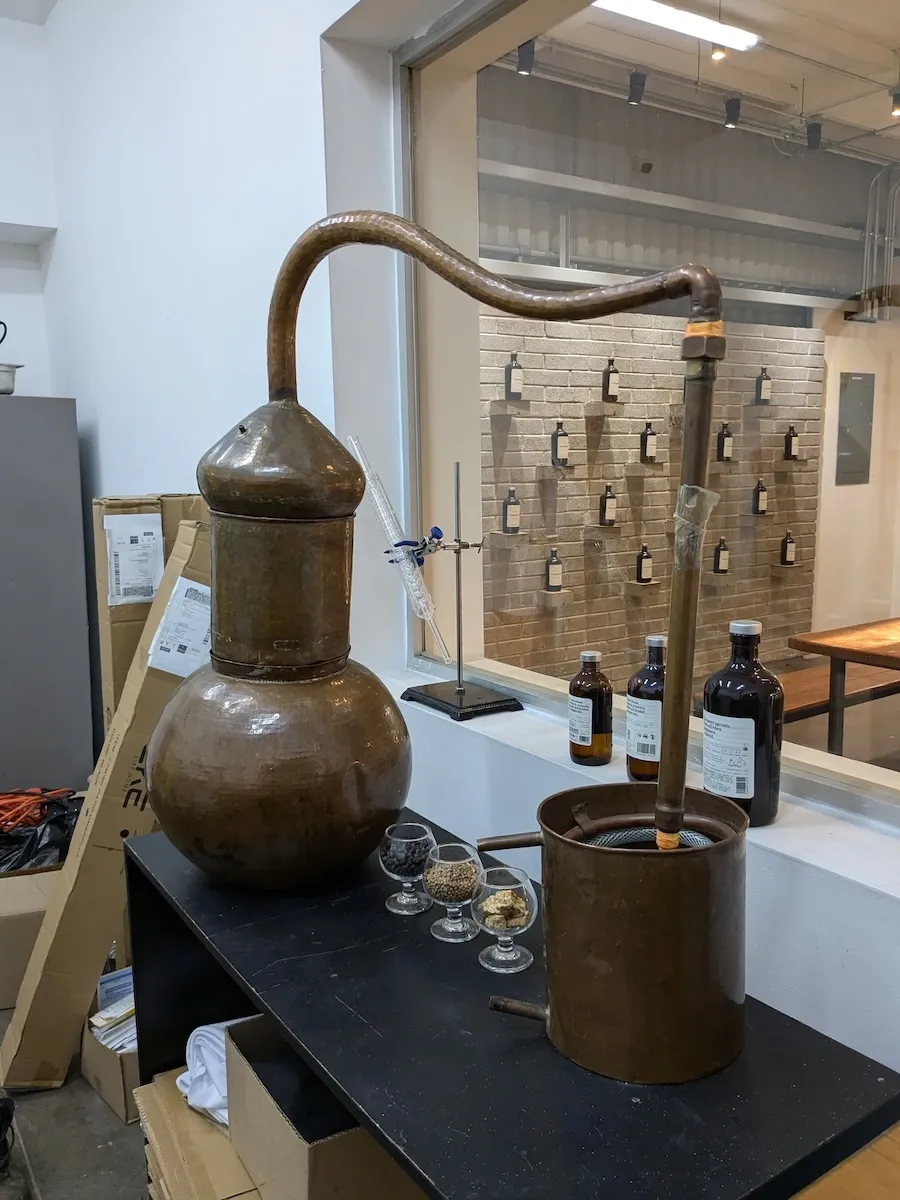
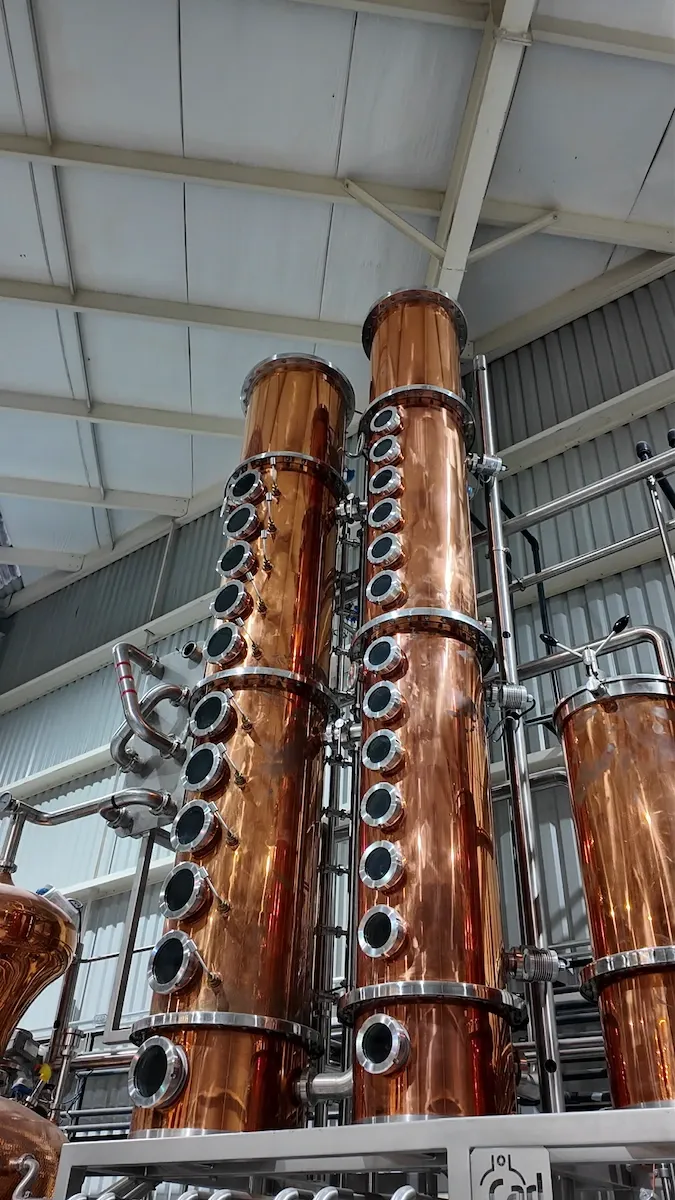
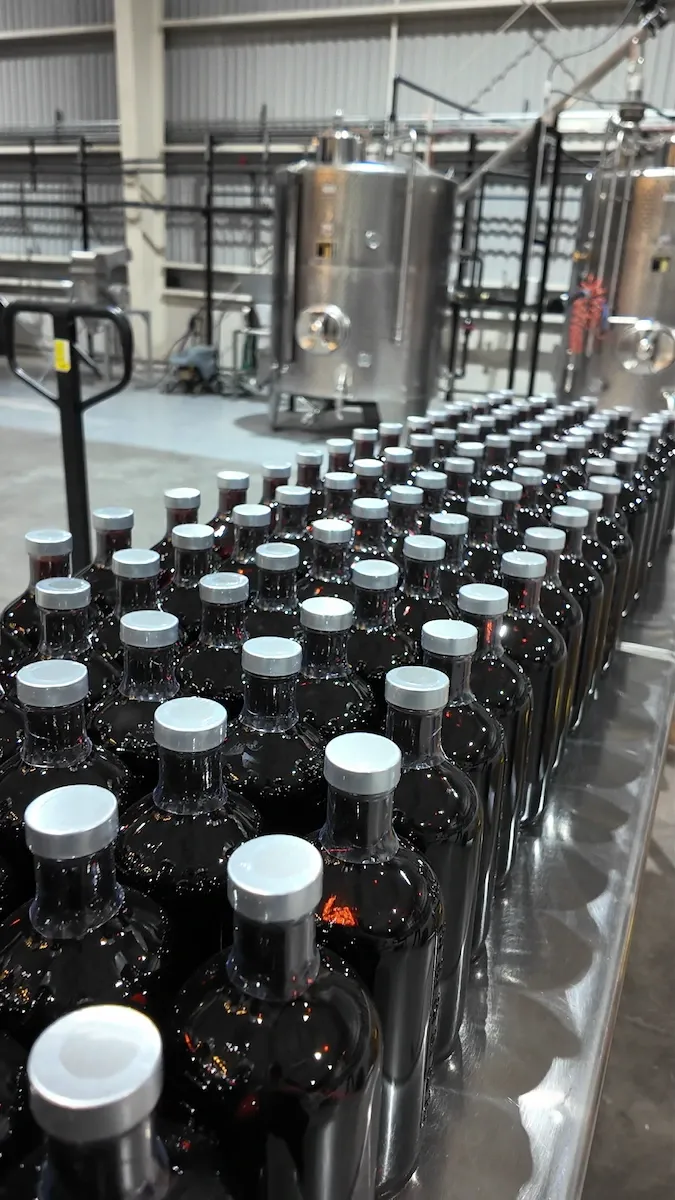
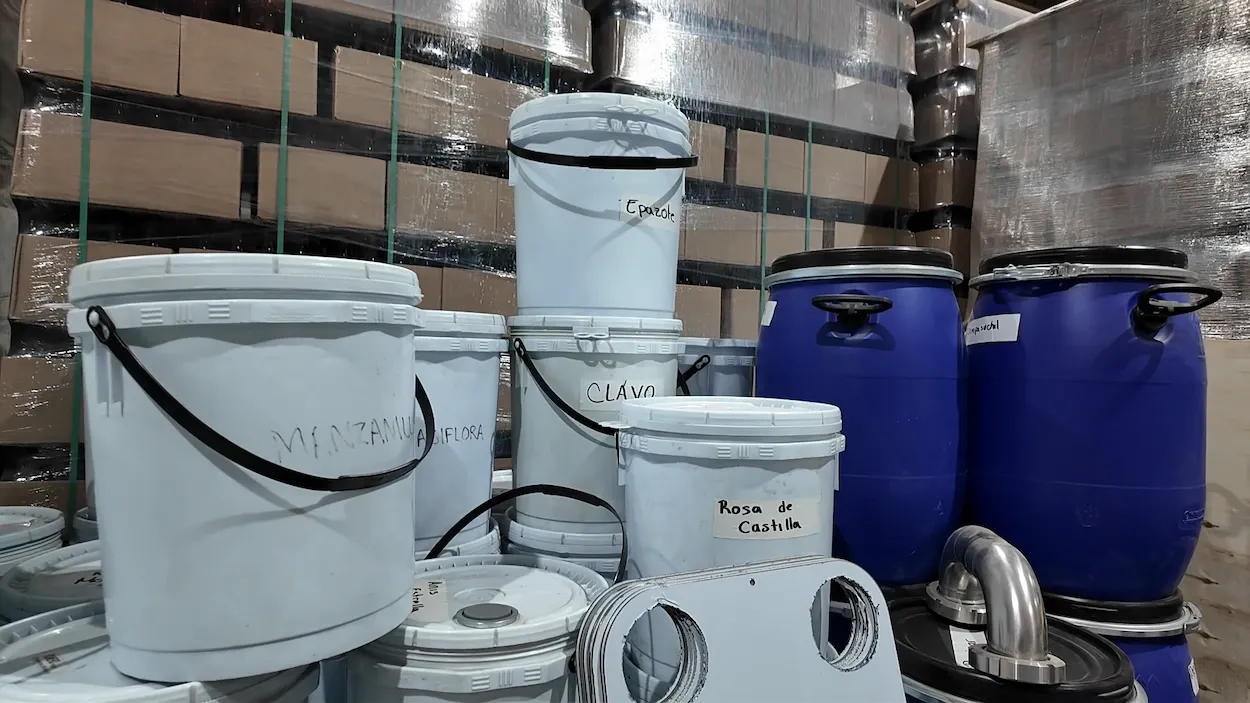

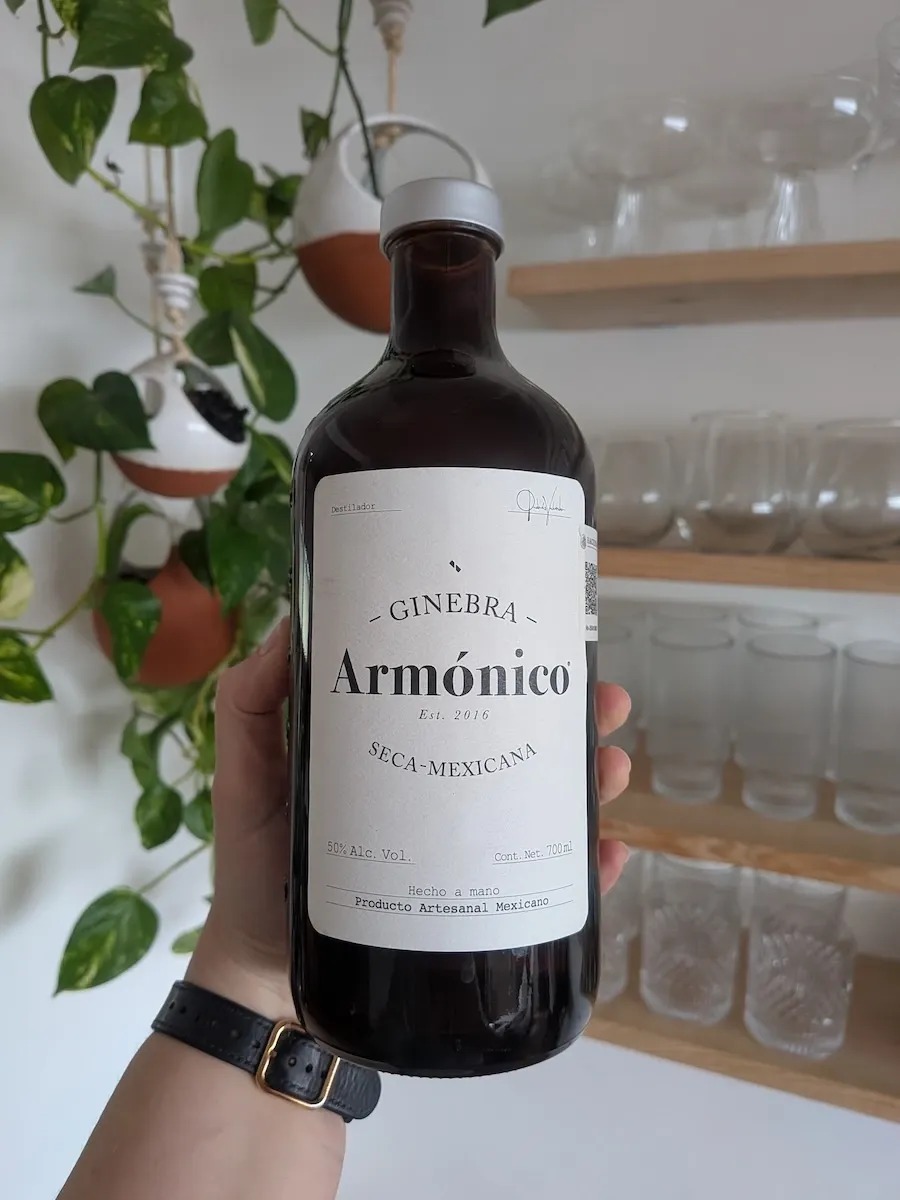
© 2025 Between Drinks
More from this episode
Mexico makes great classic gin, as well as some more experimental bottles. That's what makes them so fun!
Transcript
Show Intro (0:00)
Welcome to Between Drinks, a podcast where we travel the world one drink at a time.
I’m your host, Caro Griffin, a mezcal sommelier, traveling bartender, and all-around drinks nerd.
In each episode, I’ll take you somewhere new to dive into a local drink with a story to tell. We’ll talk about its history and how it’s made, but also its connection to the place and the people that make it what it is.
There’s a great story behind every great drink, and I can’t wait to share them with you. Thanks for listening.
Episode Intro (00:22)
Welcome back! This season, we’re diving further into Mexican spirits that are not made from agave. And this episode is about a classic spirit that I’m sure you’ve had plenty of experience with.
I’m talking about gin, or ginebra as we say in Mexico!
Gin is interesting because it’s not defined by its base like a lot of spirits, like whiskey, rum, or even tequila. It’s made with a neutral grain spirit and then characterized by its botanicals. Specifically, the inclusion of juniper. As long as juniper is the predominant flavor, you can call your spirit gin.
It’s basically flavored vodka… if you want to be really rude about it.
The list of botanicals used to be pretty simple, but as gin is made in more and more countries around the world, we’re seeing a wider variety of botanicals and, thus, a wider variety of gins. Producers are using herbs, spices, and fruits local to their region, and tailoring them to the flavor profiles of the people around them.
Mexico’s gin industry is about 20 years old, but most brands have been around for half that. And, while that’s roughly the same amount of time as Mexican whiskey, for example, I feel like gin hit its stride a little faster.
In part, that’s probably because gin is faster to make - or, at least, to get to market. You don’t have to wait three years while it ages in a barrel, but also gin is just more popular here. Market studies show that, after tequila and mezcal, gin is the most popular spirit in Mexico. (Which I was kind of surprised by!)
Those gins used to all be imported, but a growing number of them are local. And I think that’s awesome.
I love supporting local brands, obviously, but gin is a spirit based on its botanicals… and Mexico is one of the biodiverse countries in the world. Stands to reason, you can do some pretty cool stuff with the botanicals available here.
And make pretty cool stuff, they do!
So, pull up a bar stool, and let’s dive in to Mexican gin…
History of Gin (01:57)
Gin’s grandfather is a spirit called genever, which the Dutch started distilling in the 13th century. (Genever, juniper, you see the phonetics there?)
It came to Britain with immigrants at the turn of the 17th century, and let’s just say the three hundred or so years that followed were… pretty wild, to say the least.
London had just become the biggest city in the world, and its influx of both immigrants and people from the countryside, combined with poor infrastructure, low wages, horrible living and working conditions… and well, let’s just say cheap gin was the band-aid.
If there ever was a perfect example of this podcast premise—that you could tell the story of a place through its most famous drink, well, London and the story of gin would be it. But that’s another story for another episode! (And I do have plans to make it, so hold tight.)
For now, let’s just say that the 1800s is where gin really became the spirit we know today.
It became synonymous with London and Britain, and today it even has its own style of gin referred to as “London Dry Gin.”
Gin was super popular for a hundred years, both in Europe and abroad, and then fell out of fashion during what the cocktail industry refers to as the “dark age of cocktails.” So dramatic, I love it. And what they’re really referring to here is the 70s, 80s, 90s.
During this time, bartenders were largely relying on mass-produced mixes and shit ingredients rather than fresh produce and craft spirits. People drank simple mixed drinks, or super-sweet novelty cocktails… and gin didn’t really have a place in those drinks.
It is, however, really good in a craft cocktail.
So, when the craft cocktail boom kicked off in the early 2000s, gin was suddenly back in a big way. And it led to hundreds, if not thousands, of gin brands to pop up very quickly.
Suddenly, everyone was putting their spin on this old-school spirit. New botanicals, a new style of flavored gins, even barrel-aged gins….
But to understand the differences in those things, we should talk a little more about how gin is made.
Alex
Para elaborar quinebra tenemos tres formas de extracción.
Que es la “old tom” (el proceso de maceración en frío), el destiler gin que es el destilado neutro en la olla con los botánicos y el arrastre de vapor que es este. En el “old tom,” lo que se recomienda a poner son botánicos con fructosa…
How Gin is Made (04:59)
That was Alex Sanchez from Armonico Gin, who was nice enough to walk me through all the different categories and styles of gin earlier this year.
There are lots of different ways to make gin… but essentially, you’re infusing a neutral spirit with juniper and other botanicals.
The neutral spirit is usually made from grain, but it doesn’t have to be, and the whole point is that it’s neutral. Botanicals are delicate, and so are their flavors, so you need something that’s not going to overpower them.
You would never use a strong spirit like… say, mezcal, as a base. That would be wild!
(If I were on camera right now, I’d look at you very meaningfully, but since I can’t do that, just know that this is me foreshadowing what’s to come.)
As I was saying, you take your neutral spirit and you infuse it with juniper and other botanicals in whatever way you want. There are two main ways this is done…
Some distillers macerate, or steep, the botanicals in the neutral alcohol for a few hours or days to extract the flavors. This process is good for full-bodied gins made from hearty ingredients.
Others use vapour infusion, or percolation. This is where you install a basket inside the still for the botanicals. As the alcohol vapour rises, it passes through those botanicals. This preserves more delicate flavors like flowers and citrus peels, and results in lighter, more subtle profile.
There are other methods, but these are the main two, and some distillers will even use both.
And, as always, there are an infinite number of microdecisions involved that make this an art and a science.
Alex
Los botánicos nos llegan en esas cobetas blancas, ahora pasamos a verlos. El jefe de producción con órdenes de Andrés Valverde hace la receta exacta y ya que tiene todos los elementos juntos en los azules eso lo pasa para acá para que se muela….
Armonico Gin (06:34)
That was Alex again, from Armonico Gin, which is made in Querétaro.
If you listened to the episode on Mexican whiskey, you already know that Queretaro is a mid-sized city in central Mexico that has a surprising number of distilleries and breweries.
Armonico has a distillery right there in the city, and they are known for their London Dry-style gin, which is made with 32 botanicals.
20 of those botanicals are endemic to Mexico. And the other 12 are classic London Dry-style ingredients, most of which are imported from the Mediterranean.
The neutral spirit is made from corn because, of course. This is Mexico, and we love our corn!
It’s diluted to 60 proof, and then they infuse the botanicals with a combination of maceration and vapour infusion, the processes we just talked about.
So, some of the botanicals are being ground up, steeped in the neutral alcohol, and then that liquid is put into the still… but they also put some different botanicals in the basket for vapor infusion.
And when all of this comes off the still, they’re blending it with a little water and a little more of the neutral spirit.
If this sounds like a lot of work, that’s because it is! Making a great gin is a lot of work, and the result of a lot of trial and error and many, many tests over usually many years. And Armonico’s been at it for a while!
In fact, their founder and master distiller, Andrés Valverde, started making craft beer when he was just 16. And then, at 18, he set up a 1-liter still in his apartment and started selling bootleg gin to his friends, who eventually convinced him to start selling them bottles. (Thankfully, for us.)
Now, he’s 30, and I just saw Armonico in the big chain supermarket across the street from my house for the first time. Which is pretty fucking cool!
Mexican Gin (08:07)
The gin industry is dominated by the London Dry gin category, which is a gin that has no added sugar or coloring.
This is an official category of gin, so when people say “London Dry,” it has a particular meaning ascribed to it. And you can make it anywhere, so it doesn’t have to be from London.
But, in addition to the London Dry category, there are other official categories and less official styles, too, that are mostly used colloquially to categorize and describe different gins.
And so, now that Mexico has a dozen gin brands, it begs the question: What is Mexican-style gin?
Alex
Creo que es muy temprano porque justos… nos estamos basando todavía las marcas que conocen el arrué, el reglamento…
That was Alex again, sharing that in his opinion, it’s too early to say for sure what will come to define “Mexican gin.” And this was a pretty common answer that rings true to me, too.
But, in my research… and extensive taste testing. (Wink wink, nudge nudge.) There have been a few things that have stood out to me…
For starters, the base in Mexican gin is usually corn or agave instead of grain. But, because the whole point is to have a neutral base, this doesn’t really impact the final flavour. (If you want agave, go drink mezcal.) The reason that distillers are using it here is less about trying to impart those flavors and more about the fact that that’s what is accessible.
Second, there tend to be more botanicals, and more endemic ones, for sure. Many of the botanicals that are essential for gin’s “gin-y” flavor (like juniper) aren’t native, and so those are usually imported from the Mediterranean. But producers are putting an emphasis on the flavors of Mexico by including a lot of herbs, fruits, etc. that are native. It’s often maximalist as hell.
And then there’s what I refer to as “the weird shit,” for lack of a better term.
Across the board, Mexican distillers are not afraid to try something new. And that definitely applies to the gin category!
Alessandra
I'd say there are three defining reasons behind its creation. First, my brother and co-founder, Jose Luis, has always had a fascination with rare and distinctive gins. He's the kind of person who seeks out bottles you cannot easily find twice. He even has a personal collection of rare gins.
Second, I had just returned from living in London, so I was immersed in the heart of the global gin revival. And, at the same time, the Mexican spirits were rising. You would see a lot of mezcal out there. And lastly, our family, as I mentioned, has been in the hospitality world for generations.
So, creating this gin wasn't just about crafting a drink. It was about capturing the spirit of Chihuahua of our home and expressing it through a contemporary and also, in a way, in a global lens, right? So, that’s how we came about with a gen finished with sotol.
Acronimo Gin (11:13)
One of my favorite things about Mexican spirits is producers’ willingness to fuck around and find out, and the gin category probably embodies that more than most.
Whether it’s made from grapes that weren’t good enough to be wine, or one made from my precious agave… or even packed with 32 botanicals that represent the 32 states of Mexico… there’s no shortage of bottles that make me raise my eyebrow and go… “Excuse me, what?”
Which is exactly what happened when I tried Acronimo for the first time. That clip you just heard was one of the founders, Alessandra Camino Creel.
And before we get too deep into her story, I want to clarify that Armonico - the gin from Queretaro - is different from Acronimo - the gin we’re going to talk about from Chihuahua.
I realize that my two favorite Mexican gins have inconveniently similar names… so bear with me. I’m going to try to clarify them as we go!
Back to Acronimo, the one from Chihuahua…
I tried Acronimo for the first time at a bar show. They had just launched their gin and sotol, and, if we’re being honest, I really only stopped to try their sotol.
The guy working there was like, “You gotta try the gin too!” And I smiled and said sure, but wasn’t really expecting much. But it literally made me do a double-take, y’all. The guy’s face very clearly said, “I told you so….” without him having to actually say it.
It’s that distinctive! And that’s because Acronimo’s gin is blended with their sotol.
Alessandra
Other than Jose Luis really liking unique gins and having like a small collection of them, we also wanted to make something very, not only authentic, but something that reflected Chihuahua's bold spirit, right? Something that was terroir-driven. So, that's how we decided to also integrate Sotol… and blend it into the equation. And the beautiful part of it is that it's not omnipresent, right?
The flavor profile is very cardamom-driven, citrusy. You can also feel the pepper, a bit of the lavender, but then at the end, you feel the punch of sotol. So, we wanted to have… for the gin to have a Chihuahuan identity.
That was Alessandra again, the co-founder of Acronimo.
Acronimo is based in the northern state of Chihuahua, which, from a spirits perspective, is known for its sotol.
Sotol is an artisanal spirit with a long history.
It’s kind of like mezcal in a lot of ways, but it’s made from a plant called Dasylirion instead of Agave. We used to think it was a type of agave, and that sotol was a type of mezcal, but science has proved us wrong. It’s its own plant, its own species, its own category, but if you’ve never tried sotol, mezcal is the closest comparison.
I always think of it as being a little greener, a little less smoky, but, like mezcal, the flavor can vary depending on the region. Chihuahua is a huge state, the biggest in Mexico, so there’s a lot of variety there.
Acronimo makes both a sotol and their gin, which is blended with sotol.
Alessandra
At the beginning, we were thinking of using the Sotol as a base spirit—so have the Sotol and then macerate it with botanicals, but then, the nature of gin is that it has a lower tolerance to methanol than sotol, mezcal, and tequila have, right? Just because of the way they're normally being produced.
So, that's when we said wait, and we said, you know, we're gonna do kind of like a traditional gin, and then at the end we blend it with sotol.
So, we just add 17 % of Sotol at the end. And it's from the variety wheeleri only.
The result is a gin that is both juniper-forward and floral, but has an earthy flavor and subtle smokiness that is more like a spent match than a full-on campfire.
It’s a gin that gin lovers will appreciate… but it’s also one that I think non-gin drinkers could get behind too. And I love that!
I don’t want all my gin to taste the same, and Mexican gin has a lot of variety that I love to play around with.
Armonico - the first gin, the one from Queretaro - is the perfect example of a Mexican dry gin. It’s taking a classic spirit and proving that Mexico can make a damn good version.
You can easily slip it into your favorite gin cocktail—whether that’s a Martini, a Gin & Tonic, or a Negroni—and it’ll sing. And that’s not something to sniff at, because it’s really hard to make a gin that works in all of those cocktails.
A lot of times, you find one that kind of only works in a martini, or is too much for a martini, but is great for a gin & tonic, and so the fact that Armonico works across the board is one of the reasons it’s always on my bar cart.
Acronimo - the sotol gin from Chihuahua - is the other side of the coin. It shows that you don’t have to do things the way they’ve always been done. You can take an old British favorite and combine it with an old Mexican favorite for something totally new.
Together, these two gins represent Mexican spirits to me: The classic interpretation that’s made really well, with a little Mexican twist. And the more experimental version that’s pushing the envelope.
I have bottles of both on my back bar, and I wouldn’t have it any other way.
Where to Find It (15:40)
Now that I’ve convinced you that you need to try Mexican gin stat… let’s talk about where to find it.
This category is a little bit easier to explore outside of Mexico, especially if you live in the US, so you have a lot of options!
Condesa Gin is probably the most well-known. It’s made right here in Mexico City, by an amazing female distiller that you already met: Hillhamn Salome, the founder of Xila. So, if you listened to the Aperitif episode, you already learned a little about her and her distillery.
Condesa Gin has three varieties with different profiles, and every single bottle is made by Salome in her distillery.
It’s widely available in Mexico, as well as the US, UK, and a few other European cities. It seems to be growing pretty fast!
Armonico, the great London-style dry gin that we just talked about, is available in Mexico, the US, Germany, Australia, and Dubai… and probably more by the time this episode comes out. So keep an eye out.
Acronimo, the sotol-finished gin from Chihuahua, is available in Mexico and the US. It’s still pretty new, so hopefully we’ll see them head overseas at some point.
And, lastly, I want to shout out Gracias a Dios—it’s produced by the makers of Juan del Campo, the Mexican whiskey we talked about in the first episode. And the base is agave!
So, this is the one that I was foreshadowing earlier. When I heard they were making gin out of agave, I was like… absolutely not, how dare you… but it’s really good.
It’s only available in Mexico, so, you know, make a note to throw a bottle in your bag next time you come to visit.
Conclusion (17:30)
Well, that’s all for this episode, folks.
There are a lot more Mexican gins where these came from, so I rounded up info about all of them and threw it up on my website. Check that out for a long list of brands to look out for, as well as links on where to buy the ones we talked about in this episode.
That link is betweendrinks.co/mexicangin.
If you’re new to Between Drinks, I also want to make sure you know that I write a weekly newsletter where I talk about the overlap between travel, culture, and drinks.
It’s basically a mini version of this pod. And it’s where I share a lot of the behind-the-scenes stuff that goes into these episodes—trips to distilleries, conversations with brewers and bartenders, and specific recommendations on where to get great drinks in cities around the world.
You can subscribe at that same link: betweendrinks.co/mexicangin.
Thanks for listening, and I hope to see you for the next episode as we dive further into other Mexican spirits!
Show Notes
Interviews:
- Alex Sanchez, from Armonico
- Alessandra Camino Creel from Acronimo
Sources:
- Mezcalistas
- Gin, Glorious Gin by Olivia Williams
- The World Atlas of Gin by Joel Harrison and Neil Ridley
Where to Buy Mexican Gin
Disclaimer: I have no affiliation with the sinks I've linked below. Order at your own risk!
Mexico
- Acronimo — Available at specialty bottle shops.
- Armonico — Widely available! Order online or check your local shops.
- Condesa Gin — Widely available! Order online or check local shops.
- Diega — Widely available! Order online or check local shops.
- Enebra 1610 — Order online.
- Fresco 77 — Widely available! Check local shops.
- Granicera — Available at specialty bottle shops.
- Ginebra Mexicana EV — Order online.
- Gracias a Dios — Order online.
- Japi Gin — Order online.
- Las Californias — Available at specialty bottle shops.
- Loro — Order online.
- Omoteo — Order online.
- Perro Desterrado — Order online.
- Solferino — Order online.
Some places to look in CDMX:
- El Liquor Store (Roma Norte)
- Mezcalia (Roma Norte)
United States
Keep in mind that distribution is fragmented due to state laws! All the brands below are available somewhere, but not in every state.
- Acronimo — Available online and at specialty bottle shops.
- Armonico — Available at specialty bottle shops.
- Condesa Gin — Available online and at many big retailers like Binny's, Total Wine, etc.
- Las Californias — Widely available online and at local shops.
Everywhere Else
- Armonico is available in Germany, Australia, and Dubai.
- Condesa Gin is available in select European cities.
